Hello again! For this blog entry I had a look at several educational AR apps (there are a loooot of them) in order to get a picture of when AR has added value for educational purposes and when it doesn’t. So I picked out a few examples and categorized them in good and bad ones and summed up why I did (not) like them. It’s also to mention that I only looked at digital apps that use visual augmentation. But first I want to give a short overview on the wide range of educational fields and educational levels existing AR products on the market cover (this list provided by Garzón, Pavón and Baldiris [2019] might not be complete):
- Educational fields: Natural sciences, Mathematics, Statistics, Abstract concepts, Arts, Social sciences, Engineering
- Education levels: Early childhood education, Primary education, Lower secondary education, Upper secondary education, Post-secondary non-tertiary education, Short-cycle tertiary education, Bachelor’s or equivalent level, Non-schoolers (work related trainings) – It’s to mention that educational AR products for Master’s or equivalent level and Doctoral or equivalent level might exist, but weren’t conducted in the study
The good
Augmented Creativity
Augmented Creativity includes a total of six prototypes that can be used with mobile devides: Coloring Book, Music Arrangement, Physical-Interaction Game, City-Wide Gaming, Authoring Interactive Narratives and Robot Programming – I had a look at the first two of them.
The Coloring Book is an application available that brings colored drawings to life: It comes with several templates that can be printed out and colored. When the drawing is scanned with the app on a smartphone or tablet (iOS and Android), it detects and tracks the drawing and displays an augmented, animated 3D version of the character, which is textured according to the child’s coloring (See Fig. 1).
Advantages the authors mention:
- Creative Goal: Fosters imagination, allows character individualization, helps to express feelings about character
- Educational Goal: Improves coloring skills, 3D perception, and challenges imagination
- Potential Impact: User-painted characters and levels, scripting virtual worlds through coloring
Why I like it:
- The augmentation doesn’t intervene the act of drawing and coloring by hand (which I think is an important way of creative expression in early ages), but adds additional value by digitalizing it afterwards
- Stimulates several senses
- Works really well and looks super cute (smooth animations; exact coloring; live updates)
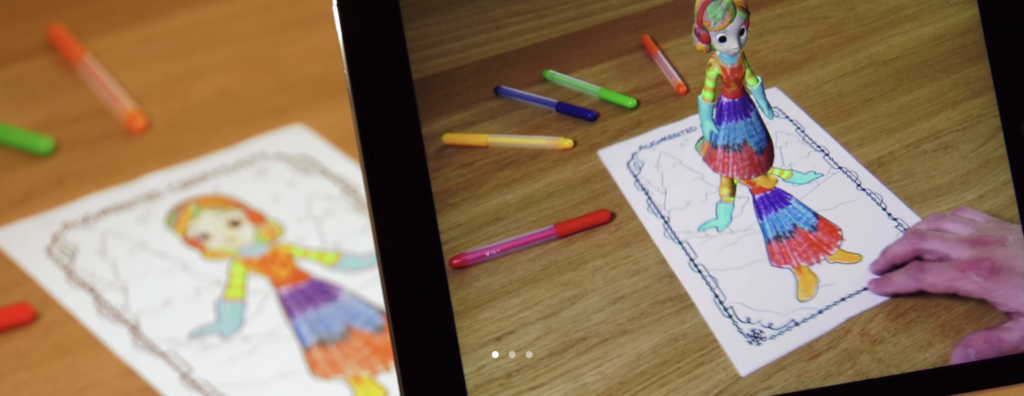
The Music Arrangement is a set of flashcards where each card represents a musical element like instruments and music styles. The user can then choose instruments and styles independently and rearrange the song as imagined. By placing a card on a physical board, the app detects the marker on it and displays an augmented version of the instrument and plays the corresponding audio, as depicted in Fig. 2. AR even allows the user to change the position and the volume of the instruments while the song is playing, allowing them to direct the virtual band.
Advantages the authors mention:
- Creative Goal: Experiment with different instruments and styles to rearrange a song
- Educational Goal: Teaches concepts of arrangements, styles, and the disposition of the band components
- Potential Impact: Collaborative music arrangement experience, learn about the disposition of an orchestra
Why I like it:
- Combines physical and digital interaction
- It stimulates several senses
- Works really well and looks super nice

Quiver Education
Quiver Education is similar to the Coloring Book mentioned above, but with a greater focus on educational content: The user can choose from a range of coloring packs, print them and color them by hand. When the coloring is scanned with the app on a smartphone or tablet (iOS and Android), a colored, animated 3D model is displayed and additional information and interaction options are provided (see Fig. 3). The content is designed around topics as diverse as biology, geometry, the solar system and more.
Why I like it:
- The augmentation doesn’t intervene the process of coloring by hand
- Stimulates several senses
- A wide range of topics
- ~ I’m still a little sceptical if it’s necessary to color a scene first in order to learn about it (i.e. a volcano)
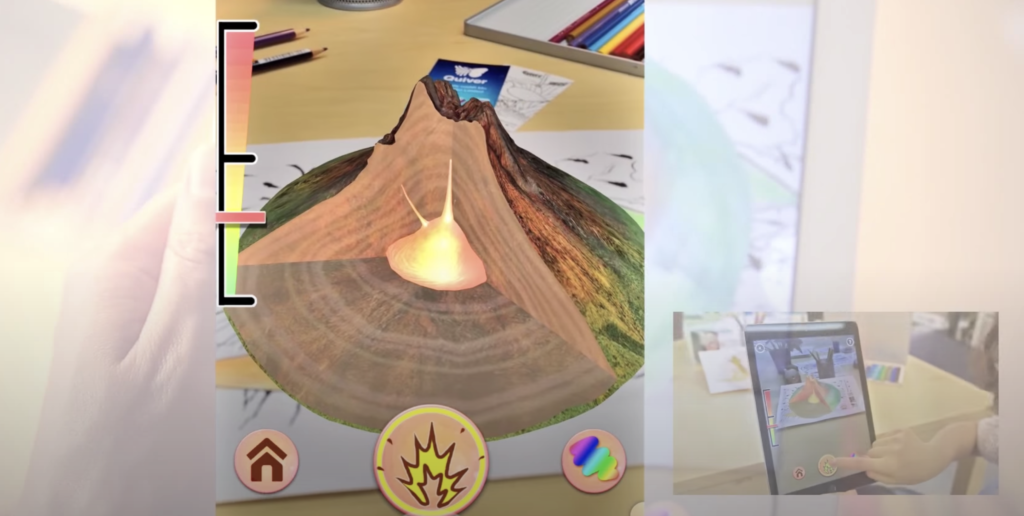
Merge EDU
Merge EDU engages students in STEM fields with 3D objects and simulations they can touch, hold and interact with. The special thing about Merge is that the user has to hold a special cube in their hands where the augmentation is placed on, so the user feels like actually holding the object in their hands and can then interact with it (See Fig. 4). Merge is available for iOS and Android and can be used with mobile devices – It also offers glasses where a user can put their phone in to have their hands free to interact with the cube.
Advantages the authors mention:
- 3D tactile learning
- Flexibility: Can be used at home and at school
- Curriculum aligned
- Multisensory Instruction
- Spatial Development
- Accelerate Understanding
- Focused Engagement
Why I like it:
- The potential of the cube: It could potentially replace physical teaching aids
- Big library of topics to explore
- Users can upload and share their own creations
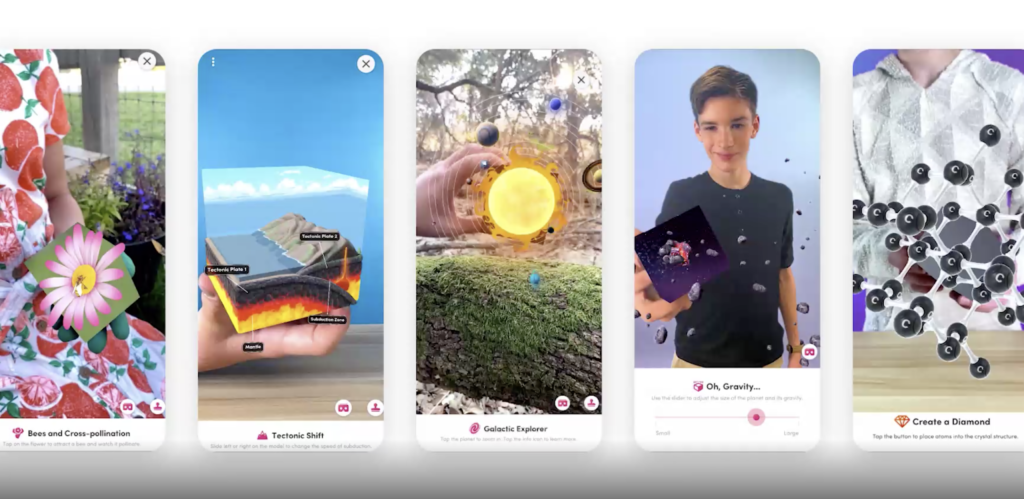
Human Anatomy Atlas
With the Human Anatomy Atlas medical students can turn any room into an anatomy lab: They can view and dissect a virtual model of a human organ or complete human body by scanning a printed picture (see Fig. 5) or simply placing a model on a flat surface (see Fig. 6). It’s also possible to study human muscles in motion by scanning a person as shown in Fig. 7.
Why I like it:
- Students can study from anywhere and don’t have to go to an actual lab
- Doing a dissection virtually might be helpdul to prepare for doing a dissection in real life (As far as I know from several people who are currently studying medicine, preparation for dissections is mostly done with the help of books, pictures, videos and physical models, but not with interactive digital models)
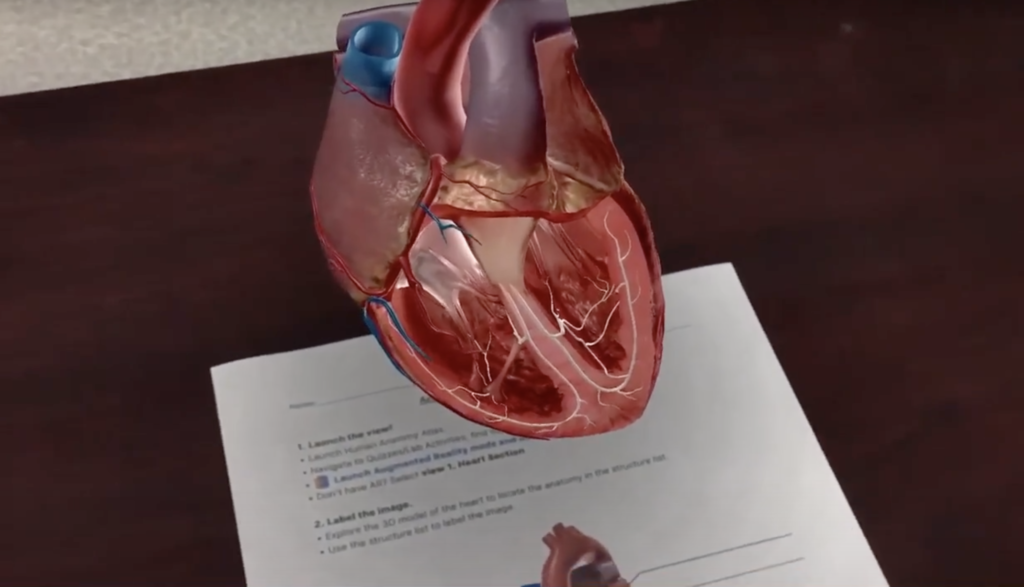
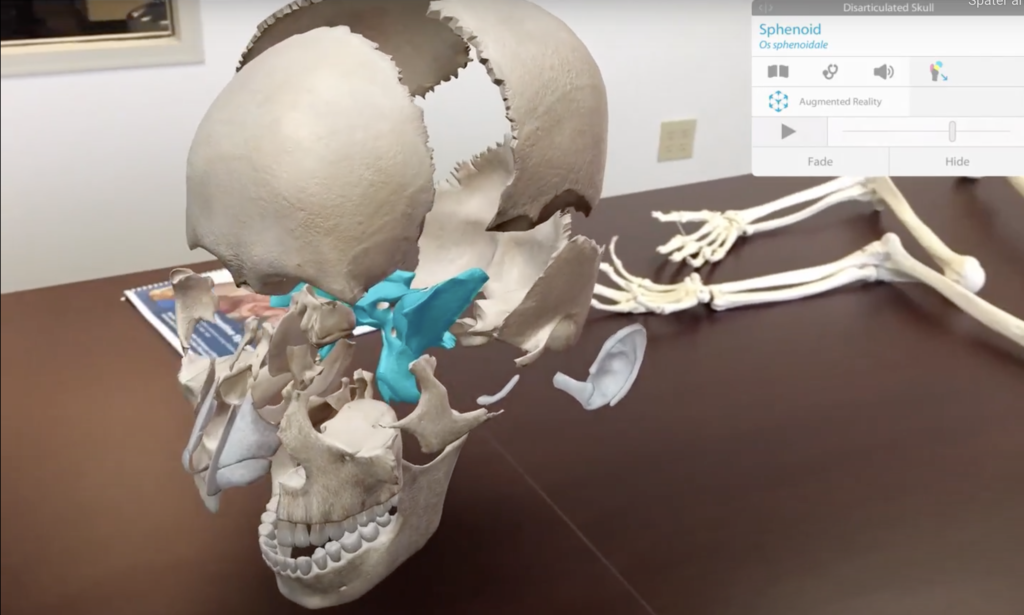
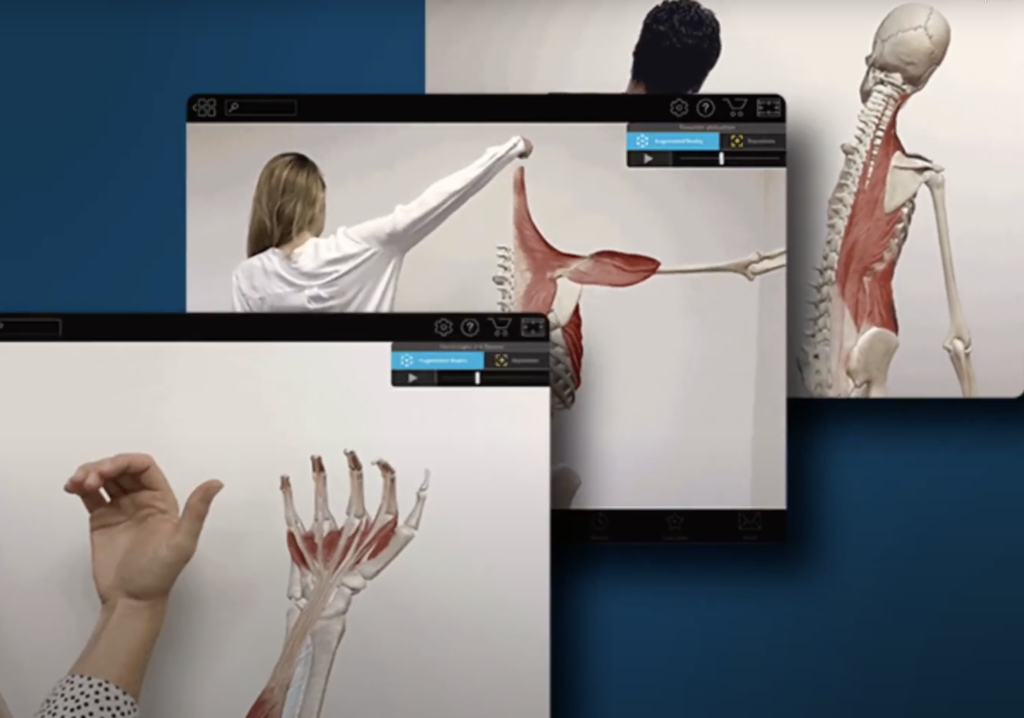
The bad
Sketch AR
With Sketch AR users can learn how to draw by using their smartphone camera: They can choose a sketch from a library and display it on a sheet of paper in front of them. The user can then follow the virtual lines on the paper step-by-step (See Fig. 8). The app also offers more features like minigames and AI portraits, but I only had a look at the AR feature. In general the app is designed really well and is also personalizable, but all in all I did not see the added value that AR has in this case.
Why I don’t like it:
- Drawing might be difficult when looking at the paper though a small screen
- While drawing I personally like to fixate the paper with one hand, which is not possible, because you have to hold your mobile device
- I don’t see the advantes of AR compared to common image tracing (by printing it out and using it as a template)
An app that does pretty much the same is “Tracing Projector”, where I also don’t see the added value.
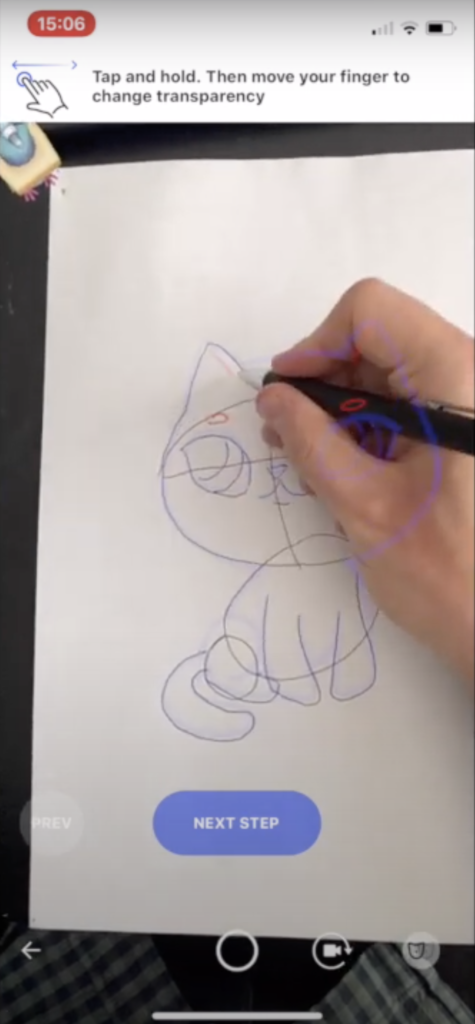
On a general note
There are a lot of apps on the market – especially in children’s education – that try to replace a physical game with a digital one (i.e. playing with dominos), which is in my opinion not what AR should be used for. AR is supposed to enhance the user’s physical world and not replace it. I believe that it’s important to experience the world with as many senses as possible – especially in early ages – and haptic experiences should not be limited to holding and controlling a smartphone. Furthermore there are a lot of apps where the user can just randomly place 3D objects in the real world, but can’t do anything with them, which might be fun and playful though, but doesn’t have many educational values in my opinion.
That’s it for today, bye and good night!
_________
Sources:
https://studios.disneyresearch.com/augmented-creativity/
https://quivervision.com/products/apps/quiver-education
https://mergeedu.com/
https://www.visiblebody.com/ar
https://apkpure.com/sketchar-create-art-and-get-nft-instantly/ktech.sketchar
Garzón, J., Pavón, J., & Baldiris, S. (2019). Systematic review and meta-analysis of augmented reality in educational settings. Virtual Reality, 23, 447-459.
Zünd, F., Ryffel, M., Magnenat, S., Marra, A., Nitti, M., Kapadia, M., Noris, G., Mitchell, K., Gross, M.H., & Sumner, R.W. (2015). Augmented creativity: bridging the real and virtual worlds to enhance creative play. SIGGRAPH Asia 2015 Mobile Graphics and Interactive Applications.
